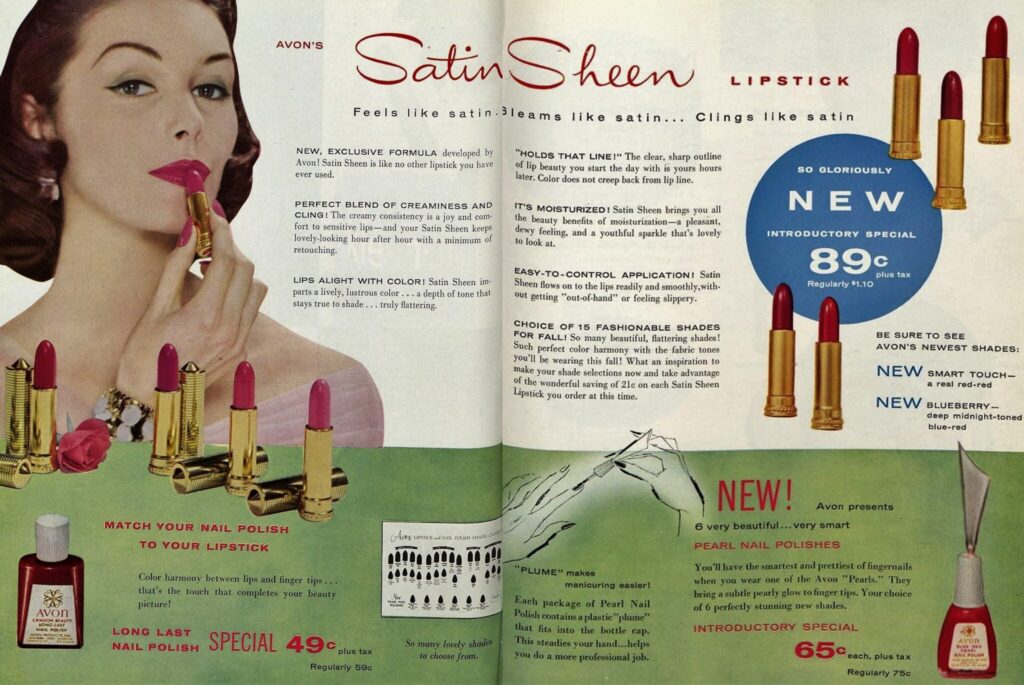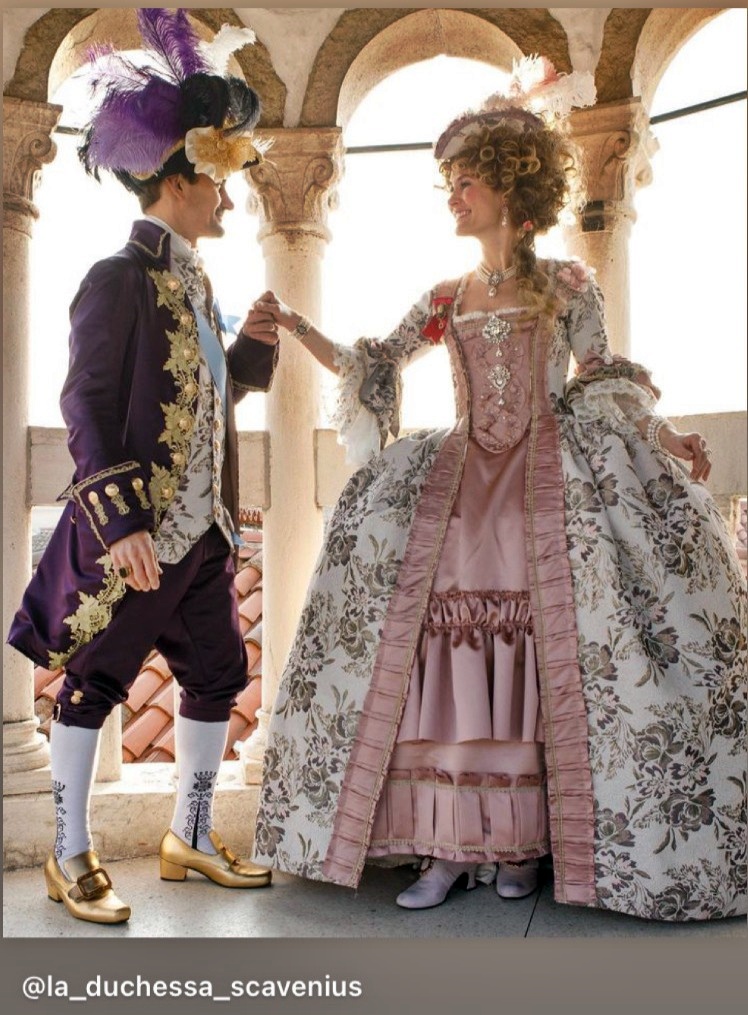I love to wear lipstick and do so almost every day. Occasionally I notice that in casual settings I am the only woman doing so, but there is something about it that makes me feel like “me.” Coloring one’s lips has a history that goes back thousands of years, with it signifying different meanings entirely depending on the year. 1850, for instance, would have seen a woman shunned for wearing noticeable lip “paint,” whereas 100 years later, in 1950, the most chic thing a woman could do was make her lipstick as obvious as possible.
Many of the trends lipstick has enjoyed (or not) over the centuries have to do with female fashion icons and their opinions about it. These opinions tell us much about the individual women and the society they influenced.
Let’s take a look at the history of lipstick as told by four women from time…
Four fashion icons and the history of lipstick
Cleopatra

The history of lipstick dates all the way back to 2500 BCE and a Sumerian queen in ancient Ur (what is now Iraq). When her tomb was discovered it included images of her with painted lips, among other items that prove what a fashionista she was.
Little information is available about this mysterious queen. The next red-lipped icon, not as much. Painting one’s lips was an established sign of status in the ancient world, as seen by the depictions of none other than Cleopatra. During her time it was a style employed by wealthy men and women alike and made of natural materials. Says Dash.Harvard.Edu:
“Like all Egyptian cosmetics, lip color was concocted at home in brass or wooden makeup kits and perfumed. During the empire’s heyday and twilight years, lip paint increased in importance and sophistication, with its use continuingly unhindered by any form of regulation. Popular color choices included orange, magenta, and blue-black. Red also remained a fashionable option, and, in fact, the use of carmine as a primary red dye in lipstick initially came from Egypt’s 50 B.C. avante garde, such as Cleopatra. In life, it became a social mandate to apply lip paint using wet sticks of wood, and, in death, each well-to-do woman took at least two pots of lip paint to her tomb.”

Cleopatra’s love of makeup would help to make it an acceptable part of people’s daily get-up for centuries in the Eastern world. There have hardly been any times when it wasn’t in vogue.
Europe would be another story entirely, and two queens would be largely responsible for the rise and fall of the trend.
Queen Elizabeth I
Makeup doesn’t have as long of a history in Europe as it does in the Eastern world. There are few mentions of it until the Renaissance when courtesans embraced the practice. It would remain largely with this group of women until Queen Elizabeth I developed a fondness for it. The Queen decided to make her appearance part of her international intrigue and enjoyed a sharp contrast between her skin and lip color.

Queen Elizabeth’s ladies-in-waiting would have been responsible for creating her makeup and likely used cochineal, gum Arabic, egg whites, and fig milk. Many sources credit this group of women for creating the first-ever lipstick. In an attempt to please her and keep her well-colored, it is believed they took the paste used to achieve the desired color, rolled it into a tube, and dried it in the sun.

It is said that Queen Elizabeth had a half inch of lipstick on when she passed, though I can hardly imagine that being accomplished. The many paintings of her bright lips would ensure that it was acceptable for females for another two centuries to come. But then, it would become a much-condemned choice…
Queen Victoria
No, Queen Victoria wasn’t known to wear lipstick. But she would alter its history by making it entirely indecent and thus making way for a comeback decades and decades after she did so.
The Queen set fashion trends, especially during her early reign. The trends she set were known for their demur look and focus on the modest, feminine standards of the time. The style of the time for white women was to maintain a light, polished complexion, suggesting that one stayed out of the sun and enjoyed a life of leisure. While rosy cheeks and pink lips were considered beautiful, they were at least expected to appear to have occurred naturally.

Queen Victoria considered lipstick and rouge to belong to improper women, not those representing the best of English society. She referred to lipstick as “impolite” and reportedly banned it in the Empire at one point (though I have not been able to find a direct source for this claim).

The attitude of the time was that beauty was naturally occurring and that a woman living a proper lifestyle would achieve it. One of the go-to beauty guides of the Victorian era was The Arts of Beauty, Secrets of a Woman’s Toilet by Lola Montez. A famous authority on how to be noticed, her words leave no question about the attitude toward lipstick during the 19th century.
“Many a time have I seen a gentleman shrink from saluting a brilliant lady, as though it was a death’s head he were compelled to kiss. The secret was, that her face and lips were bedaubed with paints.”
“Let every woman at once understand that paint can do nothing for the mouth and lips. The advantage gained by the artificial red is a thousand times more than lost by the sure destruction of that delicate charm associated with the idea of ” nature’s dewy lip.” There can be no dew on a painted lip. And there is no man who does not shrink back with disgust from the idea of kissing a pair of painted lips. Nor let any woman deceive herself with the idea that the men do not instantly detect paint on the lips.”
Paintings and photographs of the Queen helped to solidify the natural look as the look of proper society. However, this would all change once being improper became the thing to mark a lady as stylish.

Are you enjoying this post on the history of lipstick? Check out this post: Rosy cheeks: the Victorian way
Clara Bow
Lipstick started to be produced on the mass market by the beginning of the 20th century, appearing in tube form for the first time. The Edwardians weren’t all too into it, but the flappers were a different story. Bold, stylish women went out of their way to find ways to use their appearance to make statements about the progress and place in society that they desired. In short, they were ready to make their own rules.
Clara Bow was someone born to rebel. When she made her way on screen she personified the early flappers, wearing a bob and bright lipstick. It was perfect for the black-and-white films of the time.

Clara was someone who wanted to be noticed and used a signature lipline as one way to do it. She accentuated the uppermost part of her lip and the lowest, creating a charming heart that became known as “cupid’s bow.’ The style was striking for its color and shape and an instant hit with the flappers and beyond.

During the 1920s lipstick was available in a retractable tube that was used with the help of a tiny sliding lever on the side. One could also buy stencils to ensure that the perfect cupid’s bow was achieved.



Marilyn Monroe
The heavily shaped lip-look would remain the sought-after look through much of the 1930s. It would then slowly make its way to a more natural shape, though bold colors remained in popularity. The fashion icon who helped to establish this trend was Marilyn Monroe. And while dark lipstick and the cupid’s bow enjoyed wide-spread popularity, Marilyn’s love of red lipstick would cause it to become a fashion statement chosen by a brave few.

Part of this shift came because of the characters Marilyn played. They were seductive, feminine, and always done up. She took the look into her off-camera life, creating the classic “bombshell” image we are all so familiar with today.

The options for lipstick were expanding during the 1950s, but as you can see, red was the most desired and the biggest trend of the decade. It was also during the 1950s that it became available in the twist tube that is still used today.



Today, lipstick is available in every color under and over the sun though it is no longer the must-wear makeup that it once was. I love to wear red lips almost every day, what is your preference?

Did you enjoy reading about the history of lipstick? Learn more about hair and makeup with these posts:
A time capsule of glamour: hair from the 1939 New York World’s Fair
100 years of women’s hairstyles: 1830-1930














I don’t wear much lipstick myself, I prefer lip gloss but as an Avon rep, I have a lot of customers who love their lipstick!
Thank you for reading!
Wearing lipstick while I read this.
Like you, I wear it nearly every day. I feel almost naked without it!